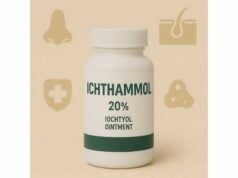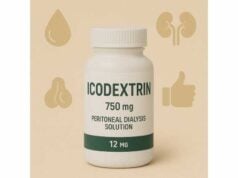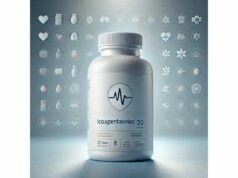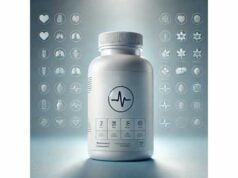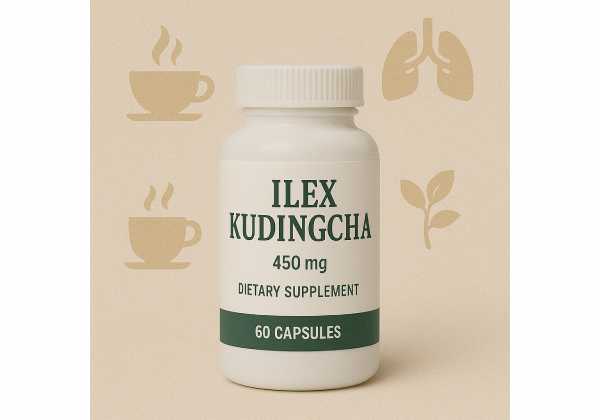
Kudingcha made from Ilex kudingcha (a broad-leaf holly) is a boldly bitter, caffeine-light tea used in parts of China for everyday wellness. The leaves contain triterpenoid saponins (kudinosides), chlorogenic acids, and flavonoids that have been studied for effects on blood lipids, weight control, inflammation, and liver and gut resilience. Human trials on “kuding tea” suggest small but meaningful improvements in total cholesterol and LDL-cholesterol with steady use, while animal and cell studies explain how bitter holly leaves may nudge metabolism—activating AMPK, dialing down fat-making signals, and improving bile-acid handling. Because extracts can concentrate these compounds far beyond what a teacup delivers, smart use means matching the form to your goal, starting with low doses, and respecting medication interactions. This guide distills the evidence into practical steps—how it works, how to brew, how much to take, what to avoid, and how to judge results in the context of your broader routine.
Key Insights
- May modestly reduce total and LDL-cholesterol over 4–12 weeks when used as daily tea.
- Mechanisms include AMPK activation, lower SREBP-1c signaling, improved bile-acid turnover, and anti-inflammatory effects.
- Typical tea use: 1–3 g dried leaf per 250 mL, up to 2–3 cups/day; extracts 100–300 mg standardized, once or twice daily with meals.
- Avoid in pregnancy or breastfeeding and use caution with anticoagulants, antidiabetics, and hepatically metabolized drugs.
Table of Contents
- What is Ilex kudingcha?
- Benefits and how it works
- How to use it day to day
- Dosage and timing
- Mistakes and troubleshooting
- Safety and who should avoid
- Evidence at a glance
What is Ilex kudingcha?
Kudingcha literally means “bitter nail tea,” a nod to the slender, twisted leaves that look like small nails after rolling and drying. Several plants are sold under the kuding name. For supplement-level discussions, it’s essential to focus on Ilex kudingcha C. J. Tseng (and closely related Ilex latifolia), both hollies; a different “kuding” comes from Ligustrum robustum and has a distinct chemistry. When labels omit the species, you can’t assume the data apply—so treat “kuding tea” as a category and Ilex kudingcha as a particular member with its own profile.
What makes Ilex kudingcha interesting? The leaf is unusually rich in pentacyclic triterpenoid saponins (kudinosides such as A, D, and related latifolosides), chlorogenic acids and di-caffeoylquinic acids, plus flavonoids. Together these produce deep bitterness and a “drying” astringency. In preclinical work, saponins help regulate cholesterol and bile acids, while chlorogenic acids support glucose and lipid handling and dampen oxidative stress. The leaves typically contain little to no caffeine as brewed at home; occasional batches show trace amounts, but most drinkers experience a stimulant-free cup.
How does it compare with green tea or yerba mate? Green tea is catechin-dominant (EGCG), mate is CGA-dominant and caffeinated, while Ilex kudingcha is saponin-forward with substantial CGAs but minimal caffeine. The subjective effect is not a “buzz” but a lean, palate-cleansing bitterness some people find appetite-steadying. If you want calm focus without stimulants, Ilex kudingcha slots between non-caffeinated herbals and low-caffeine green teas.
Product formats you’ll see.
- Whole leaves or “needles” for brewing; quality varies with harvest season and processing.
- Tea bags for convenience; potency varies and often tastes harsher.
- Standardized extracts (capsules or powders) listing total saponins or chlorogenic acids; these are far more concentrated than tea.
- Blends with green tea, citrus, or berberine—useful for stacking effects but harder to pin down for tolerability and interactions.
Taste reality check. The bitterness is the point. It’s also the main barrier for new users. Good preparation softens sharp edges without diluting actives (short steeps, cooler water, citrus peel). If you find classic kuding overpowering, start with a lighter “first rinse,” then brew.
Bottom line. Ilex kudingcha is a distinctive, caffeine-light bitter holly tea with a plausible metabolic profile driven by saponins and chlorogenic acids. Treat it as a food-like daily beverage first; think of extracts only when you need standardization and can monitor outcomes.
Benefits and how it works
Cholesterol and lipid profile (most consistent human signal). Across randomized trials that enroll people with dyslipidemia or broader metabolic disorders, daily kuding tea modestly reduces total cholesterol and LDL-cholesterol over 4–12 weeks relative to control beverages. The magnitude of change is typically in the small to moderate range and depends on baseline risk and diet quality. Effects on HDL-cholesterol and triglycerides are more variable. Because published trials often group multiple “kuding” species together, the cleanest takeaway for Ilex kudingcha is that a steady tea habit can nudge LDL-C down when paired with sensible eating.
Weight and body composition (animal-strong, human-uncertain). In mouse models, kuding extracts protect against high-fat-diet weight gain, reduce adipocyte size, and improve insulin sensitivity—without reducing food intake. Mechanistically, this tracks with AMPK activation (the cell’s energy sensor), suppressed SREBP-1c and other fat-making programs, and—in some studies—LXRβ antagonism, a nuclear receptor pathway tied to lipid homeostasis. These are promising mechanisms, but data in people remain sparse; expect weight effects only as an adjunct to diet, activity, and sleep.
Liver and gut support (preclinical). Kuding fractions protect against hepatic steatosis in animals, improve aminotransferases under metabolic stress, and preserve gut barrier architecture under oxidative challenge. Saponins appear to modulate bile-acid synthesis and export, and polyphenols boost endogenous antioxidant defenses (e.g., glutathione systems), which together may explain better fat handling and lower liver fat in models.
Inflammation and oxidative stress. In cell and animal studies, kuding preparations reduce pro-inflammatory cytokines and inhibit NF-κB and p38 MAPK signaling in metabolic tissues. Chlorogenic acids and di-caffeoylquinic acids scavenge reactive species and up-regulate antioxidant enzymes, actions that could indirectly improve insulin sensitivity.
Vascular and appetite-related effects (emerging). Bitter tastes can influence the gut-brain axis through bitter taste receptors expressed in the GI tract; some users report reduced sweet cravings after a cup. Human data are preliminary, but pairing kuding with higher-fat meals is a common traditional pattern and aligns with its bile-acid-modulating reputation.
What we don’t know yet. We lack large, species-verified trials isolating Ilex kudingcha with standardized dosing, long follow-up, and hard outcomes (events, medication needs). Interactions with common cardiometabolic drugs are under-studied. Until these gaps close, use kuding as a gentle adjunct, not a substitute for evidence-based care.
Plain-language mechanism summary. Kuding helps metabolism the way a good coach does: it nudges cells to burn more and store less (AMPK), quiets the “make more fat” message (SREBP-1c and LXRβ), moves cholesterol toward bile pathways, and cools background inflammation. None of this is a miracle; all of it works better when diet quality, movement, and sleep are in place.
How to use it day to day
Pick a format that fits your goals and tolerance.
- Whole-leaf tea (best starting point): easy to titrate, low risk, no stimulant “spikes.”
- Standardized extract (for tracking): consider if you need consistent dosing for a lipid panel trial.
- Blends: green tea (catechins), citrus bergamot (bergamot polyphenols), or soluble fibers may complement lipid goals; blends also raise interaction complexity.
Brewing guide for flavor and function.
- Weigh the leaf: start with 1–2 g per 250 mL water.
- Quick rinse (optional): pour hot water over leaves, immediately discard to temper sharp bitterness.
- Brew: steep 1–3 minutes at 85–95 °C.
- Taste and tune: if harsh, shorten time or reduce leaf; if thin, extend by 30–45 seconds or add 0.5–1 g.
- Re-steep: quality leaves tolerate 2–3 infusions; keep later steeps shorter to avoid astringency.
- Bitterness balance: add a strip of orange or yuzu peel, a ginger coin, or a cinnamon shard; a pinch of salt softens bitterness without sugar.
When to drink.
- With or after meals higher in fat: pairs with its bile-acid effects and may blunt post-meal sluggishness.
- Mid-afternoon: the bitterness can reduce sweet cravings without caffeine jitters.
- Evening: often fine due to low caffeine, but test daytime first to assess GI response.
Stacking smartly.
- Food-first allies: oats/legumes (viscous fiber), nuts (sterols), olive oil and colorful produce (polyphenols) reinforce lipid control.
- Supplement stacks to consider only with guidance: green tea catechins, citrus bergamot, berberine, psyllium. More polyphenols aren’t always better; GI tolerance is the limiting step.
How to track results.
- Establish a baseline (lipid panel, fasting glucose if relevant, waist, scale).
- Log dose, steep time, and cups/day for 8–12 weeks.
- Recheck labs; keep diet and activity stable enough to attribute changes.
- If no LDL-C movement after a solid trial, kuding alone may not be a lever for you—consider fiber, weight loss, or medications per your clinician.
Sourcing and quality.
- Favor suppliers that name the species (Ilex kudingcha), origin, harvest season, and processing.
- Choose whole, intact leaves over dusty fragments.
- Look for contaminant testing (heavy metals, pesticides, microbes) and, for extracts, standardization (e.g., “≥20% total saponins” or specified chlorogenic acids).
Who benefits most.
- Adults targeting modest LDL-C reductions as part of broader lifestyle work.
- People seeking a caffeine-light ritual that supports appetite control.
- Those sensitive to coffee who still want an antioxidant-rich daily tea.
Dosage and timing
Tea (food-level use).
- Starting range: 1–2 g dried leaf per 250 mL, once daily for 3–5 days to test tolerance.
- Typical range: 1–3 g per cup, 1–3 cups/day (about 1–9 g/day), brewed 1–3 minutes.
- Evaluation window: 8–12 weeks of steady use before judging lipid changes.
- Titration: adjust in 0.5–1 g steps or add a cup; re-steep rather than over-steep.
Extracts (standardized products).
- Saponin-standardized extracts: 100–300 mg once or twice daily with meals.
- Chlorogenic-acid-focused extracts: many provide 100–200 mg CGAs per serving; start low to avoid GI upset.
- Not equivalent to tea: a 300 mg capsule may deliver several times the active load of a teacup. Follow the label and escalate cautiously only if well tolerated.
Timing with meals and meds.
- With breakfast or dinner: aligns with lipid and bile-acid cycles, supports GI comfort.
- Medication spacing: leave 2–3 hours around drugs with narrow therapeutic windows unless your clinician says otherwise.
- Exercise: kuding isn’t a stimulant; if you enjoy a pre-workout ritual, pair with citrus peel for a bright, non-caffeinated cup.
Special populations and dose adjustments.
- Low body weight or sensitive GI: stay at 1 g/250 mL, once daily, for at least a week before changing.
- On statins, anticoagulants, or antidiabetics: stick to tea strengths unless your prescriber approves extracts and monitoring.
- Liver conditions: avoid concentrated extracts; if you choose tea, keep intake modest and monitor symptoms.
Stopping rules and red flags.
- New upper-right abdominal pain, dark urine, unexplained fatigue, or itching—stop and seek care.
- Unusual bruising or bleeding (on anticoagulants) or hypoglycemic symptoms (on antidiabetics)—pause and talk to your clinician.
- Persistent nausea or loose stools—reduce steep time/grams or discontinue extracts.
What not to do.
- Don’t “chase” effects by doubling grams or pushing 10-minute steeps; bitterness and GI irritation will rise faster than benefits.
- Don’t combine multiple high-polyphenol products without a plan; the GI tract sets a ceiling.
Mistakes and troubleshooting
Mistake 1: Buying “kuding tea” with no species.
Why it matters: clinical and chemical profiles differ among Ilex and Ligustrum sources.
Fix: insist on Ilex kudingcha (or Ilex latifolia) on the label; avoid vague “kuding” listings.
Mistake 2: Expecting coffee-like energy.
Why it matters: Ilex kudingcha is typically caffeine-light; any “lift” is more likely appetite-related.
Fix: if you need caffeine, pair one cup with low-caffeine green tea—or enjoy kuding in the evening instead.
Mistake 3: Over-steeping to force potency.
Why it matters: longer, hotter steeps extract harsh tannins and too many saponins, increasing GI upset.
Fix: brew short and hot (1–3 minutes), then re-steep rather than extending.
Mistake 4: Treating extracts like tea.
Why it matters: capsules can be several-fold more concentrated than a teacup.
Fix: start at the low end (e.g., 100 mg standardized) with meals; escalate only if needed and tolerated.
Mistake 5: Stacking without strategy.
Why it matters: polyphenols can interact with meds or each other, and high loads can unsettle the gut.
Fix: if you also use green tea catechins, berberine, or bergamot, introduce items one at a time with a log and lab follow-up.
Mistake 6: Ignoring medication timing.
Why it matters: concentrated kuding in animals induces hepatic enzymes, potentially altering drug levels.
Fix: separate from critical meds by 2–3 hours and coordinate with your clinician if you plan to use extracts.
Common side effects and quick fixes.
- Nausea/queasiness: shorten steep; drink with food; add citrus peel.
- Bitter aftertaste: finish with plain water or a slice of orange.
- Loose stools: cut grams or frequency; pause extracts, then retry at half dose.
- Headache/lightheadedness (rare): hydrate; ensure you ate; discontinue if recurrent.
Flavor upgrades without sugar.
- Citrus peel (orange, pomelo, yuzu) brightens and rounds edges.
- Ginger or cinnamon add warmth and aroma.
- A pinch of salt softens bitterness surprisingly well.
Judging success.
- Your lipid panel improves or remains steady while you reduce saturated fat and increase fiber.
- You enjoy the ritual enough to stay consistent.
- You tolerate the brew without GI complaints. If not, try a lighter steep or move on—plenty of other tools work for lipids.
Safety and who should avoid
Overall tolerability. Tea-strength use is generally well tolerated; the most frequent complaints are pronounced bitterness, mild stomach upset, or looser stools with long steeps or high grams. Concentrated extracts require more caution.
Medication interactions (use clinician guidance).
- Anticoagulants/antiplatelets: saponins and polyphenols can influence platelet function and inflammation pathways. If you take warfarin, a DOAC, or dual antiplatelet therapy, stick to modest tea use unless your prescriber approves and monitors extracts.
- Antidiabetic drugs (insulin, sulfonylureas): improved insulin sensitivity could lower glucose; watch for hypoglycemia when you add kuding and coordinate dose changes through your prescriber.
- Statins and other hepatically cleared meds: animal work shows induction of liver xenobiotic-metabolizing enzymes with high-dose extracts over weeks. Translation to humans isn’t clear, so avoid extract megadosing and keep your care team in the loop.
Liver health. Preclinical studies often show hepatoprotective signals, but any concentrated botanical can backfire in susceptible individuals—especially when combined with other herbals. New jaundice, dark urine, upper-right abdominal pain, or unusual fatigue warrants stopping and seeking care.
Who should avoid or limit.
- Pregnancy and breastfeeding: human safety data are insufficient—avoid.
- Children/adolescents: skip extracts; consider tea only with a pediatric clinician’s input.
- Active GI disease: reflux, ulcer, or inflammatory bowel conditions may be aggravated by bitter, astringent teas—use caution or choose gentler herbals.
- Pre-op period: pause extracts two weeks pre-procedure; many surgical teams also prefer stopping nonessential teas in the final days for comfort and predictability.
Allergy and sensitivity. Rare but possible with any herb. Start with sips; stop if you notice rash, itching, or swelling.
Quality assurance. Choose vendors that verify species (Ilex kudingcha), provide batch testing for heavy metals, pesticides, and microbes, and specify standardization for extracts. Avoid opaque “kuding” products with no species, origin, or assay details.
Pets. Hollies can upset pets’ stomachs if chewed; keep dried leaves and brewed waste out of reach.
Driving/alertness. The tea is typically caffeine-light and not sedating. If large bitter infusions make you queasy or lightheaded, skip driving until you feel normal.
Evidence at a glance
Human trials (kuding tea as a category). A recent systematic review and meta-analysis pooling eight randomized controlled trials (≈700+ participants with metabolic disorders) found reductions in total cholesterol and LDL-cholesterol with kuding versus controls over weeks to a few months. HDL-C and triglyceride results were inconsistent. Species verification varied across studies, so interpret results as kuding tea overall, not Ilex kudingcha alone.
Animal and mechanistic findings (Ilex-focused).
- Weight and liver fat: in high-fat-diet models, kuding extracts prevent weight gain, shrink adipocytes, and reduce hepatic triglycerides.
- Molecular pathways: AMPK activation and suppressed SREBP-1c recur across studies; some show LXRβ antagonism, helping explain lipid improvements.
- Inflammation/oxidative stress: reductions in pro-inflammatory signaling and boosts in antioxidant enzyme activity align with better insulin sensitivity.
- Bile-acid handling: saponins appear to assist cholesterol disposal via bile-acid pathways, supporting LDL-C reduction.
Safety signals. Tea-strength use is well tolerated. A six-week mouse study using high-dose extracts induced hepatic xenobiotic-metabolizing enzymes, a reminder to be cautious with capsules and to coordinate with clinicians if you use prescription drugs cleared by the liver.
Practical implication. If your goal is incremental LDL-C improvement, a daily tea routine (1–3 cups) for 8–12 weeks, plus fiber-rich meals and movement, is a reasonable, low-risk trial. Reserve extracts for targeted, monitored experiments when tea alone isn’t enough or when consistent dosing is required—and loop in your healthcare team.
Research gaps. We still need species-verified human RCTs that isolate Ilex kudingcha, with standardized preparations, dose–response data, drug-interaction work, and longer follow-up. Until then, treat kuding as a supportive beverage, not a stand-alone therapy.
References
- Lipid-Lowering Efficacy of Kuding Tea in Patients With Metabolic Disorders: A Systematic Review and Meta-Analysis of Randomized Controlled Trials 2022 (Systematic Review)
- Chemical Composition, Bioactivity and Safety Aspects of Kuding Tea—From Beverage to Herbal Extract 2020 (Review)
- High Dietary Kuding Tea Extract Supplementation Induces Hepatic Xenobiotic-Metabolizing Enzymes-A 6-Week Feeding Study in Mice 2019 (Research Article)
- Kudinoside-D, a triterpenoid saponin derived from Ilex kudingcha suppresses adipogenesis through modulation of the AMPK pathway in 3T3-L1 adipocytes 2018 (Research Article)
- Extract of Kuding Tea Prevents High-Fat Diet-Induced Metabolic Disorders in C57BL/6 Mice via Liver X Receptor (LXR) β Antagonism 2012 (Research Article)
Disclaimer
This guide is educational and is not a substitute for personalized medical advice, diagnosis, or treatment. Do not start, stop, or combine kuding tea or concentrated extracts with prescription medications—especially anticoagulants, antidiabetics, or drugs processed by the liver—without speaking to a qualified clinician. Avoid use during pregnancy or breastfeeding. Stop and seek care if you experience jaundice, dark urine, abdominal pain, unusual bruising, or hypoglycemia symptoms.
If this article helped you, please consider sharing it on Facebook, X (formerly Twitter), or your preferred platform, and follow us for future evidence-based guides. Your support helps us continue producing careful, people-first health content.

